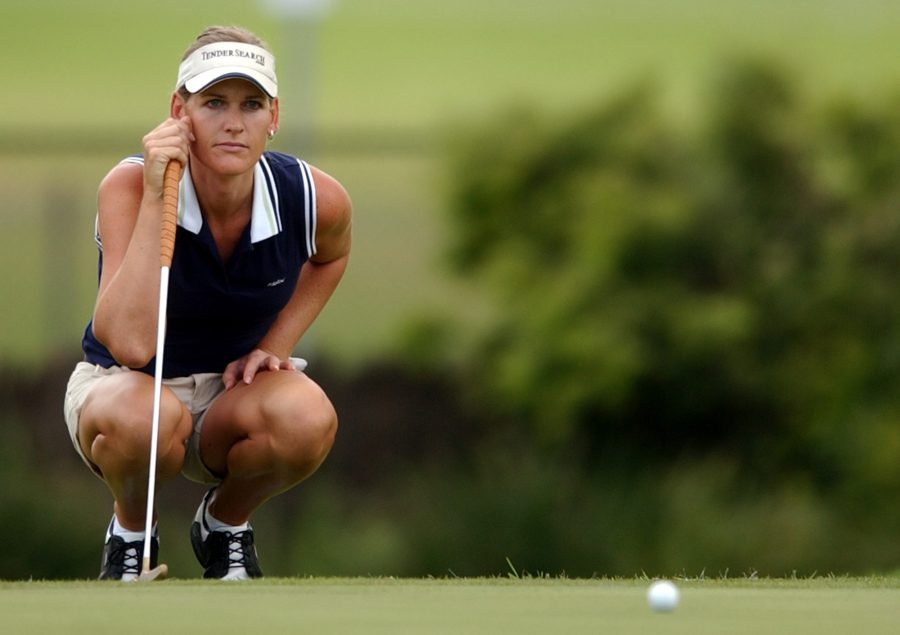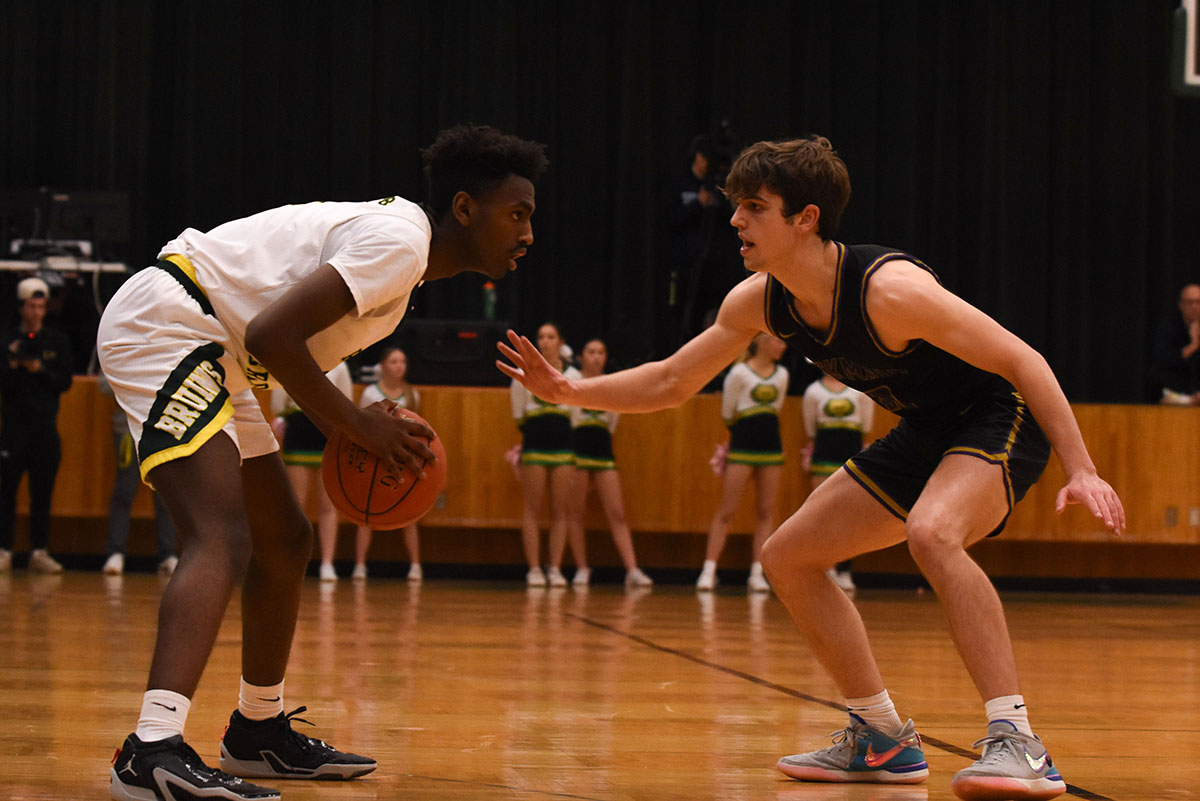Mianne Bagger lines up a putt on the green during the first round of the Women’s Australian Open golf tournament in Sydney, Thursday March 4, 2004, on her way to an opening 12-over 84 . After a year in which seven women competed in men’s tournaments, Danish-born Bagger makes history this week at the Open as the first transsexual to play in a pro golf tournament. (AP Photo/Rick Rycroft)
More than 40 years after Title IX gave women more athletic opportunities, a new gender issue has arisen that could mean dramatic reform in the world of high school sports.
Though the International Olympic Committee recently decided to allow transgender athletes to compete in the Olympics, there has yet to be a national standard for the manner in which high school transgender athletes can compete.
Texas determines gender, as it pertains to sports teams, through students’ birth certificates. Nebraska leaves the decision up to individual school districts. Minnesota allows students to determine which team best aligns with their gender identity. Each state has vastly different policies, with Missouri being no exception.
The Missouri State High School Activities Association (MSHSAA) handbook states that a transgender student may participate on their preferred-gender team as long as he or she has undergone at least a year of hormone therapy. Sophomore Abigail Barrett, a former swimmer at Battle High School who identifies as gender non-conforming, said she has reservations about MSHSAA’s requirements for transgender students.
“I don’t like [the policy],” Barrett said. “I can see where they think that’s fair, but for them to say, ‘You can’t participate until you legitimize yourself.’ It isn’t fair at all.”
The MSHSAA policy, which is taken directly from the National Collegiate Athletic Association (NCAA) regulations, took effect around two years ago, MSHSAA Communications Director Jason West said. The process of the policy began when questions started to arise over how transgender athletes should compete.
“We needed to have something in place,” West said. “We knew that there were some member schools that were finding themselves in different situations when it came to transgender [athletes], so that’s kind of what prompted the discussion.”
While the policy has been in place for two years, Columbia Public Schools Athletic Director Bruce Whitesides said he has not personally handled any cases involving a transgender athlete in the district.
“I haven’t heard of any transgender athletes,” Whitesides said. “Nobody has challenged the policy so far.”
Whitesides said transgender student-athletes would likely not even need to go through the district’s athletic department in order to compete with their preferred team.
“I would think that [transgender athletes] would be able to communicate with their athletic director in their building,” Whitesides said.
Despite MSHSAA providing an opportunity for transgender students to compete athletically, Barrett said her experience on the swim team gave her the impression that in the arena of high school sports, transgender students are not welcomed with open arms.
“I don’t think [athletics] are open to transgender people at all,” Barrett said. “There are some athletes that have come out, but they’re seen as not having the right amount of masculinity; it’s with gender expression as well. Males who are more feminine are looked down upon, so men who transition to women…you know.”
Despite Barrett’s assertion that the swim team is not an accepting environment, Zach Mertens, swim coach for RBHS, Hickman High School and Battle High School, said he would absolutely support any transgender athlete who wanted to join the team.
“If a transgender individual wanted to join the team, as a coach I would ensure that they were compliant with all MSHSAA guidelines before joining the team,” Mertens said. “Largely, I believe that these steps must be taken by the student and the student’s family. My role as a coach is to support the athlete during their transition and after.”
For Barrett, however, swimming for a team again in the future doesn’t seem likely. While MSHSAA has laid out its rules for transgender athletes, the organization currently has not taken a position on how athletes who identify as Barrett does can compete.
“I don’t identify as either [gender], so it’s a little bit more difficult for me,” Barrett said. “I’m biologically a female, so it makes sense to be on the female team, but I don’t feel correct in this body and there isn’t really anything that can fix it because being gender-queer, I don’t see how I can transition into anything that isn’t my body.”
Despite Barrett’s quandary, West said MSHSAA does not have a plan to revisit the policy. He believes the current regulations are as clear and balanced as they can be and properly address what Missouri athletes need to properly perform and compete for their school.
“We want to keep the policy as simple and straightforward as possible,” West said. “I think that’s what we’ve accomplished right now; to have as much fairness for everyone involved.”
Though no openly transgender students of either sex have joined the swim team, Mertens said he expects the team to welcome and accept any transgender athlete who takes that plunge.
“The expectation on the team is one of acceptance and community,” Mertens said. “I expect members of our team to embrace someone who looks differently than current team members individually look or feel with respect and the knowledge that the more diverse a community becomes, the stronger it becomes.”
What do you think of MSHSAA’s policy? Let us know in the comments below.
Categories:
MSHSAA policy opens discussion on transgender athletes
April 28, 2016
Mianne Bagger lines up a putt on the green during the first round of the Women’s Australian Open golf tournament in Sydney, Thursday March 4, 2004, on her way to an opening 12-over 84 . After a year in which seven women competed in men’s tournaments, Danish-born Bagger makes history this week at the Open as the first transsexual to play in a pro golf tournament. (AP Photo/Rick Rycroft)
0
More to Discover



















































































